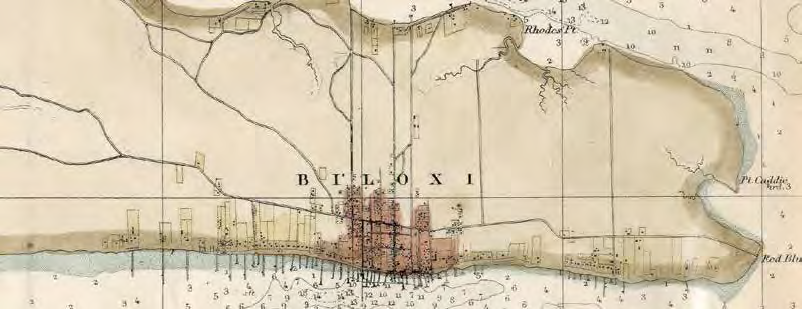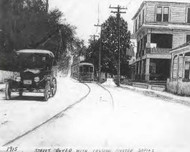Driving Through Time: Biloxi's First Roadways
Posted by Jane Shambra on Jan 3rd 2024
PHOTO — Here’s a 1915 view of Howard Avenue, looking east, at the corner of Nixon. The street, once part of Pass Road, was covered with crushed oyster shells, like many thoroughfares in that era. The electric trolley service, incidentally, ran between Point Cadet and the Methodist Campground, and along Back Bay, from 1904 to 1932. In the photo, the three-story structure is the Casa Luma apartment building, between the long-term rental “James House,” and, at far right, is the site of the present-day Southport Line restaurant.
This article originally written by Jane Shambra with the title "Biloxi's first roadways" for BNews Monthly, the monthly newsletter of the City of Biloxi. Photographs courtesy of the LHG Image Collection / Local History & Genealogy Department / Harrison County Library System unless otherwise specified.
Can you guess which of Biloxi’s streets is the oldest? You might be surprised. When the first settlers made landfall on the southernmost shores of this city’s peninsula, they did not encounter a readymade path to travel east and west.
Indeed, the first documented byway appearing on maps through Biloxi is drawn as a narrow line near the future site of the railroad. Laden with thick trees, this thin path would have been lonely and dirt-based. It was on this original passageway that the early Native Americans traveled. Probably chosen for its highest altitude and away from ponds and streams, the early inhabitants traveled along this wiggly line, safe from the erosion and waves of recurring storms. Thus, the first official street of Biloxi was actually today’s Howard Avenue and Pass Road.
We have no idea what the early Native Americans called this path, but we can research various names for this street through recent times. Originally, the road was called “Pass Christian Road” because it was the path that folks used to travel from Point Cadet (“Pointe Caddie”) to Christian Ladner’s property on the western end of Harrison County. As times changed, so did the roadway names. More than a century ago, in appreciation for the donations from the Howard Family, Biloxi renamed its easternmost section of Pass Road as “Howard Avenue.” Interestingly, there are various names for this original road: West Howard, East Howard, the Pass road, Pass Christian Road, and, now, Pass Road.

PHOTO — Here is an excerpt of a map of Biloxi in 1855.
Even the roadway itself has changed, from dirt roads, shell roads, brick pathway, and now asphalt. Traveling through time in history books and photos, one can imagine journeying by barefoot, moccasin, horseback, buggy, streetcars, and automobile. Once upon a time, Pass Christian Road even traveled through the middle of the present-day Keesler Air Force Base. Did you know that the western segment of Biloxi’s Pass Road was occupied by both a busy speedway racetrack and a popular drive-in movie theater?
Popp and his ferry: With the new Popp’s Ferry Causeway Park about to open, it's a good time to reminisce about the old Popp’s Ferry Road, named after John Popp, who operated a ferry service near the present bridge. Beginning as a simple dirt road, history records that, in 1914, this popular passageway was upgraded to a safer shell road to accommodate increased traffic.
###
Hungry for shrimp? Visit our Shop page to order wild-caught Gulf shrimp to be shipped to anywhere in the country today!

